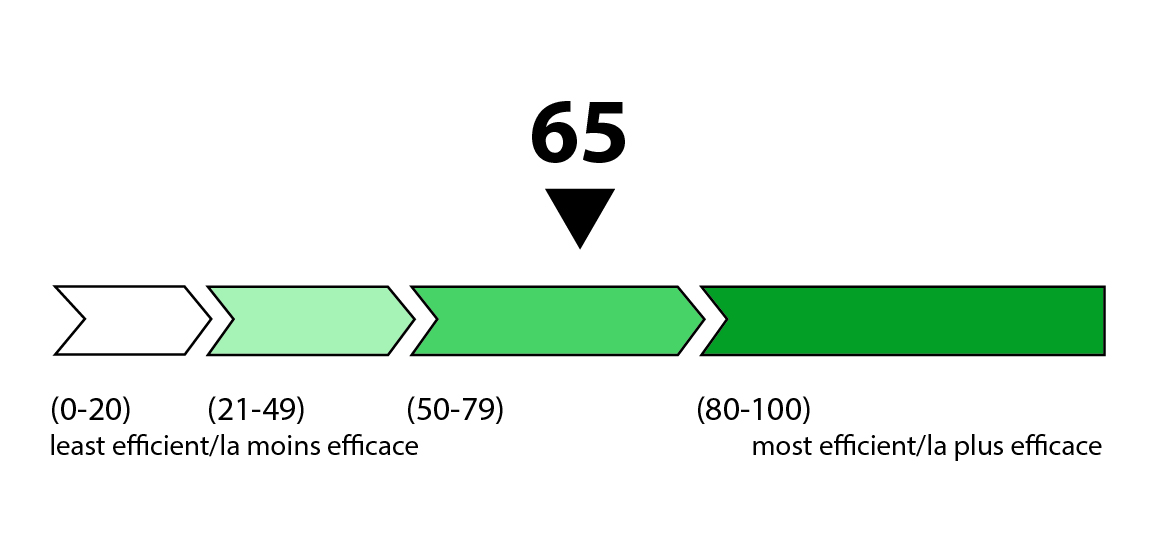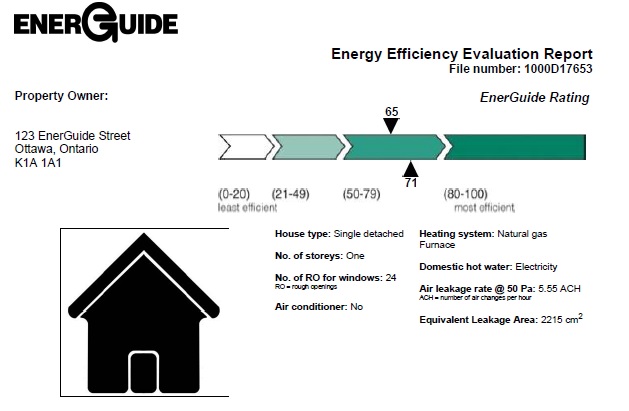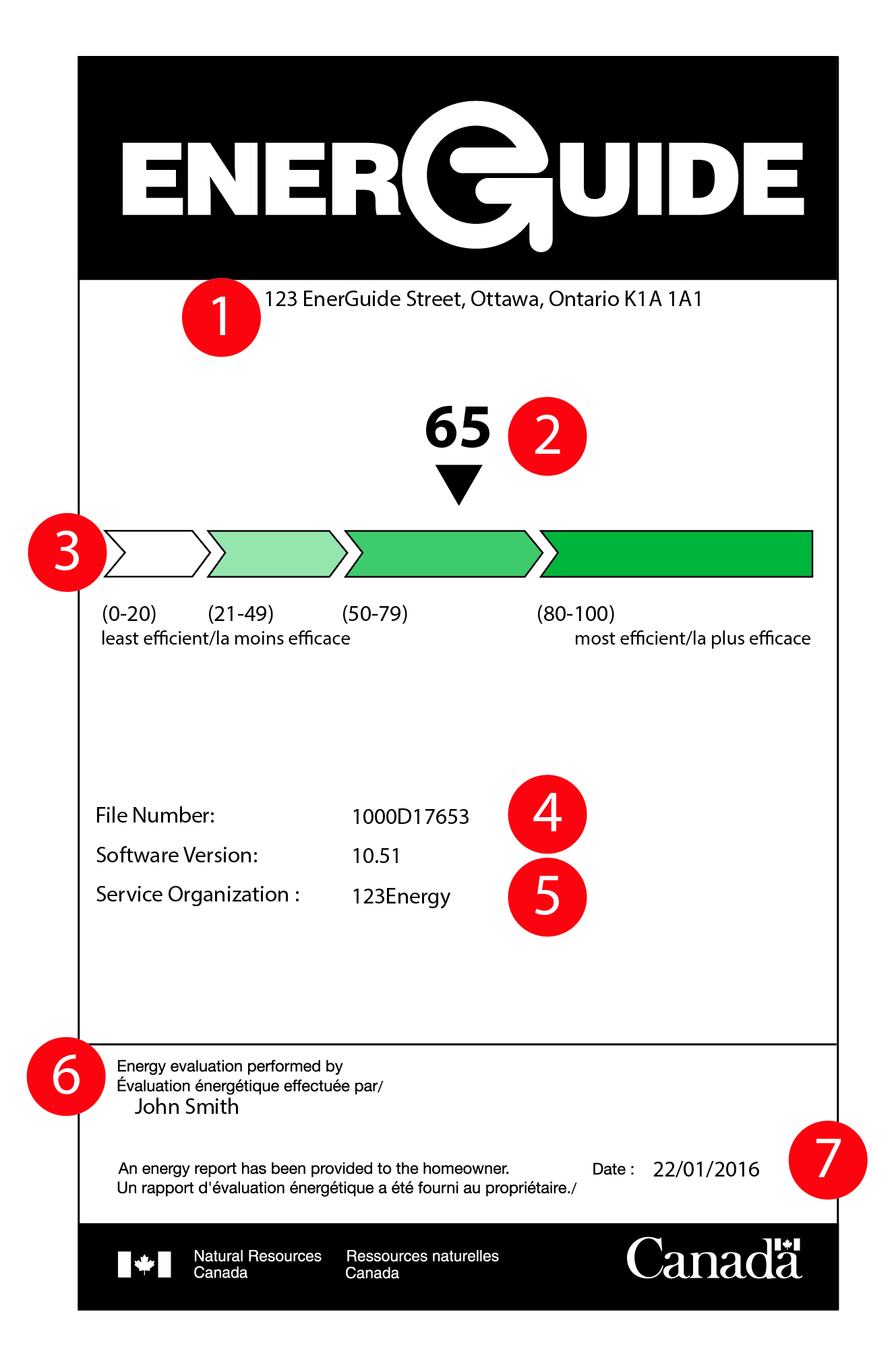EnerGuide rating 0-100 scale
Natural Resources Canada is working with partners as they prepare to adopt updates to the EnerGuide rating scale and other rating system components by province and territory across the country. During this transition period, provinces and territories will continue to use the 0-100 scale until they are ready to adopt the new gigajoules per year scale. Learn more about what's changing.
When you have an EnerGuide evaluation completed for your home, you will receive an evaluation report, rating and a label. These products were derived from information collected by your energy advisor during the evaluation after being entered into NRCan’s modelling software which calculates the home’s EnerGuide rating.
EnerGuide rating

The EnerGuide rating is a snapshot of the home’s energy performance at the time of the evaluation.
It is the energy efficiency score of your home and it ranges between 0and 100.
The more efficient a house, the higher the rating number:
0 represents a house with major air leakage, no insulation and high fuel consumption. In other words, a house with poor energy efficiency and high utility costs.
100 represents an airtight and well-insulated house where energy purchased and energy generated, through renewable sources, is equal. Also called a ‘net-zero’ home.
See how your home measures below:
| House Characteristics | Typical ERS Rating |
|---|---|
| Existing house not upgraded | 0 to 50 |
| Upgraded existing house | 51 to 65 |
| Energy-efficient upgraded existing house | 66 to 74 |
| New house built to building code standards without energy requirements | 70 to 76 |
| New house built to building code standards containing energy requirements | 77 to 80 |
| Energy efficient new house | 81 to 85 |
| High-performance, energy efficient new house | 86 to 99 |
| Net zero house (energy purchased and energy generated, through renewable sources, is equal) | 100 |
Since only the house is rated and is not based on the number of occupants or how they use it, the energy simulation software uses a set of standardized operating conditions to evaluate the house.
The Standard Operating Conditions allow for comparisons of all houses so you get an objective measure to compare your house to another in your region. The EnerGuide rating is not just a number; it provides details on your house that you can’t get elsewhere such as how your home’s energy use compares to other homes in Canada.
The rating assumes a standard number of occupants and energy use patterns. The values are:
- four occupants (two adults and two children) who are present 50 percent of the time;
- a temperature set-point of 21°C for the main and upper floors and 19°C for the basement;
- a consumption of 225 litres of domestic hot water per day;
- an electricity consumption for lighting and appliances of 24 kilowatt hours (kWh) per day; and
- a total minimum monthly average ventilation rate of 0.30 air change per hour during the heating season, including natural air infiltration and mechanical ventilation.
EnerGuide label
After the evaluation is performed for your home, an EnerGuide label will be affixed to your electrical panel.
If you decide to do a follow-up EnerGuide home evaluation after you complete energy efficiency upgrades in your home, you will also receive a new rating and a label.
If you decide to do a follow-up EnerGuide home evaluation after you complete energy efficiency upgrades in your home, you will also receive a new rating and a label.
EnerGuide evaluation report

The evaluation report is your roadmap to help you save energy.
The evaluation report provides you with your EnerGuide rating and a home energy action checklist with recommended retrofits to improve the energy efficiency of your home.

No comments:
Post a Comment